SleepyC
www.AirHeadMedia.com
Hey guys, have you ever sat there at 1am with your hand on the mouse about to click "buy it now" on some no-name brand motors for your next build? Your mind is racing, your heart is pounding, and you are thinking "Is this the right decision?!?!" No matter what the size of the build from a micro to a $15K heavy lifter, EVERYONE has done this!
The reality is there are plenty of budget motors out there that seem (at first glance) like they are pretty good, especially when they are around 50% cheaper than the name brand motors of the same size. Now, don't get me wrong, I understand that to do a truly proper comparison the test would need to compare the motors over an extended period of time to see how the motors stand up to day in and day out abuse. Motor runout, bearing durability and all of that would need to be measured but right now, I personally do not have the time to do that. But what I want to do and I have the time to do is an "out of the box and strapped to the same rig, which is the better motor?" comparison! I also understand that there are other elements that are rolled into a motor purchase decision such as product support, product reliability, durability and serviceability. But for the sake of this article I am going to compare two sets of motors as an "impulse buy". Also the comparison will be done with "real world" tests meaning there will be no thrust meters, no scopes hooked up... just my trusty Vulcan X8 rig, with T-motor 45 AMP 600HZ ESC's, 250Watt Vulcan PD board and my trusted SuperX flight control. I'll strap on one set of motors and check the results and then strap on the other set of motors and check the results using the data from SuperX to make the call.
The Project:
First I impulse purchased some funtobuyonline.com's U42's. A 400 KV motors that seemed to be U5 clones. The specs seemed pretty good and the price was right.
View attachment 21919
THEN to make this project happen I called my buddy Jim at MontoRC and ordered up some comparable "name brand motors". Which in this case ended up being the Avroto 3515.
(I also have Avroto 3520's and they have been proven to be a professional, reliable motor, so I think they fit the bill as the Pro, Name Brand motor)
View attachment 21920
Avroto AVL3515 400KV
Both motors are pretty close in specs, swing 15" props and are perfectly suited to the AUW of my rig which is around 18 - 20 lbs. (8.5 - 9.07 kg)
To start off I slapped the U42's on the rig. I then attached a 5.15lb package to the rig to simulate a camera and gimbal. (no need to risk my real stuff for a test!)
View attachment 21919 View attachment 21921 View attachment 21922 View attachment 21923
The air temperature was 31 deg F.
The Rig weighed 19.3lbs (8.75kg)
The resting ESC/Motor/Batts temp right before I took the rig outside for the test was 52 Deg F. +/- 3 deg.
The batteries used were two 5300 mah 6S packs that were charged to 100%
View attachment 21925 View attachment 21926
I then flew for 5:12 minutes. (see image) Just hovering at about 10 feet. I used Atti mode and just hovered and landed.
I took the rig indoors (took 5 seconds to get it in) and measured temps.
View attachment 21927
Recorded temps after 5 minutes of flight:
Motors: 98 deg F
ESC's: 152 deg F
Batts: 92 deg F
I have other comparisons but I will show them below after the motor swap.
I then spent the entire night swapping motors to the Avrotos.
View attachment 21928
And after some work...(at 2:30am) the Avrotos were ready to go!
View attachment 21929
And so today I did the same test with the Avrotos as I did with the U42's...
The air temperature today was 32 deg F.
The Rig weighed 19.75lbs (8.95kg) ( slightly heavier due to the thicker motor wires)
The resting ESC/Motor/Batts temp right before I took the rig outside for the test was 53 Deg F. +/- 3 deg.
The batteries used were two 5300 mHa 6S packs that were charged to 100%
I then flew for 5:09 minutes. (see image) Just hovering at about 10 feet. I used Atti mode and just hovered and landed.
I took the rig indoors (took 5 seconds to get it in) and measured temps.
View attachment 21930
Recorded temps after 5 minutes of flight:
Motors: 80 deg F (18 deg F less)
ESC's: 114 deg F (38 deg F less)
Batts: 90 deg F (2 deg F less)
So already we can see the Avrotos run quite a bit cooler.
Now thanks to the Super X "Black Box" we can compare some other numbers:
Lets look at the Power Output of all the motors:
View attachment 21931 View attachment 21932
The Avrotos had a pretty apparent power advantage using less total power on average to hover the rig. Also they seriously felt smoother. The rig did was more stable during the ATTI hover with less drift.
Next we will look at the output of the motors as a graph to see how "Smooth" they were... (probably contributed to the drift I experienced in ATTI with the Y42's.
View attachment 21933 View attachment 21934
Again the Avrotos trumped the U42's with consistency. You can see that the 4 motors in the "dirty air" had to work a bit harder, but both groups of "4" on the Avroto graph show a much more consistent power output.
Next Vibration! One of the most important aspects when doing aerial video is vibrations, and here again the Avrotos trumped the U42's with a more consistent range. (also note I was using cheap, quickly balanced props in case there was an issue, I did not want to kill my good props!)
View attachment 21935 View attachment 21936
And finally, Let's take a look at some charger screen shots to see if there was any mah differences in the motors...
U42's
View attachment 21937 View attachment 21938
The U42's used:
Batt 1: 2687
Batt 2: 2908
Total: 5595 for 5 min of flight time.
Avroto 3515
View attachment 21939 View attachment 21940
The Avroto 3515's used:
Batt 1: 2643
Batt 2: 2730
Total: 5373 for 5 min of flight time. (222 mah less than the U42's)
So there you have it. A quick "out of the box" comparison of a "no-name" motor and a name brand motor.
Again, the reliability of the motors and the service the companies provide are not part of this simple test and MUST be considered if you want to be a professional, (I once lost a shaft screw on my Avroto 3520's and Jim sent a new one overnight to me no charge.. that MATTERS!)
I did not have a second person to offer photo help for this comparison so here is a (grab cell phone while flying) pic of the trusty Vulcan X8 flying during the Avroto part of the test!
View attachment 21941 View attachment 21942
My conclusion:
If you are a professional AV/Ap guy there is no question, the Avrotos trumped the no-name brand of motor. Factor in the service and the proven reliability if you are a PRO go name brand.
BUT, if you are a novice or a hobbyist, the reality is the no-name motors are not awful. They offer a decent amount of performance for 50% savings. The only unknown is reliability and service. Which in the case of the hobbyist might not be an issue.
My personal opinion - You get what you pay for. As a professional, I would not take a chance on a no-name brand on one of my commercial rigs, to me it's simply not worth it.
That being said, Bart has challenged me to a GoPro Pro Quad build that will be going for smoothness, low cost, and flight duration, and I think I'll be using the U42's as my motor source... SO yea...
I hope this little comparison helps to some people at 1 or 2am with their finger hovering on the mouse...
GOOD LUCK!
The reality is there are plenty of budget motors out there that seem (at first glance) like they are pretty good, especially when they are around 50% cheaper than the name brand motors of the same size. Now, don't get me wrong, I understand that to do a truly proper comparison the test would need to compare the motors over an extended period of time to see how the motors stand up to day in and day out abuse. Motor runout, bearing durability and all of that would need to be measured but right now, I personally do not have the time to do that. But what I want to do and I have the time to do is an "out of the box and strapped to the same rig, which is the better motor?" comparison! I also understand that there are other elements that are rolled into a motor purchase decision such as product support, product reliability, durability and serviceability. But for the sake of this article I am going to compare two sets of motors as an "impulse buy". Also the comparison will be done with "real world" tests meaning there will be no thrust meters, no scopes hooked up... just my trusty Vulcan X8 rig, with T-motor 45 AMP 600HZ ESC's, 250Watt Vulcan PD board and my trusted SuperX flight control. I'll strap on one set of motors and check the results and then strap on the other set of motors and check the results using the data from SuperX to make the call.
The Project:
First I impulse purchased some funtobuyonline.com's U42's. A 400 KV motors that seemed to be U5 clones. The specs seemed pretty good and the price was right.
View attachment 21919
- U42 400KV Brushless Motor
- RPV/KV :400
- Configuration:12N14P
- Shaft Diameter:4mm
- Motor Dimension(Dia.*Len):Φ42×37mm
- Weight(g):155g
- ldle current(10)@10v(A).:0.3A
- No.of Cells(Lipo):3-8S
- Max Continuous current(A)180S:30A
- Max Continuous Power(W)180S:821W
- Max. efficiency current:(10-18A)>86%
- internal resistance:113mΩ
THEN to make this project happen I called my buddy Jim at MontoRC and ordered up some comparable "name brand motors". Which in this case ended up being the Avroto 3515.
(I also have Avroto 3520's and they have been proven to be a professional, reliable motor, so I think they fit the bill as the Pro, Name Brand motor)
View attachment 21920
Avroto AVL3515 400KV
- Weight approximately 152 grams not including wires.
- Weight with wires 190.9 grams
- Includes accessories to fit 3 hole Carbon Fiber props
- Includes 6mm diameter 4 bolt standard prop adapter
- External Dimensions 42.5mm D x 38mm L
- Stator Dimensions 35mm D x 15mm L
- Stator material .2mm NdFeB sheet
- Internal Shaft diameter 5mm.
- No-load speed: 400 rpm / V
- Ri (Internal Resistance) 86mΩ
- Io (no load current) 0.3A
- Voltage for Io measurement 10V
- Current capacity 35A/60s
- Max Continuous Watts: 900/60s
- Lipo cell 4s-8s (6s Recommended)
- Wire length 700mm
- 14magnets 12 stator arms 12N 14P
Both motors are pretty close in specs, swing 15" props and are perfectly suited to the AUW of my rig which is around 18 - 20 lbs. (8.5 - 9.07 kg)
To start off I slapped the U42's on the rig. I then attached a 5.15lb package to the rig to simulate a camera and gimbal. (no need to risk my real stuff for a test!)
View attachment 21919 View attachment 21921 View attachment 21922 View attachment 21923
The air temperature was 31 deg F.
The Rig weighed 19.3lbs (8.75kg)
The resting ESC/Motor/Batts temp right before I took the rig outside for the test was 52 Deg F. +/- 3 deg.
The batteries used were two 5300 mah 6S packs that were charged to 100%
View attachment 21925 View attachment 21926
I then flew for 5:12 minutes. (see image) Just hovering at about 10 feet. I used Atti mode and just hovered and landed.
I took the rig indoors (took 5 seconds to get it in) and measured temps.
View attachment 21927
Recorded temps after 5 minutes of flight:
Motors: 98 deg F
ESC's: 152 deg F
Batts: 92 deg F
I have other comparisons but I will show them below after the motor swap.
I then spent the entire night swapping motors to the Avrotos.
View attachment 21928
And after some work...(at 2:30am) the Avrotos were ready to go!
View attachment 21929
And so today I did the same test with the Avrotos as I did with the U42's...
The air temperature today was 32 deg F.
The Rig weighed 19.75lbs (8.95kg) ( slightly heavier due to the thicker motor wires)
The resting ESC/Motor/Batts temp right before I took the rig outside for the test was 53 Deg F. +/- 3 deg.
The batteries used were two 5300 mHa 6S packs that were charged to 100%
I then flew for 5:09 minutes. (see image) Just hovering at about 10 feet. I used Atti mode and just hovered and landed.
I took the rig indoors (took 5 seconds to get it in) and measured temps.
View attachment 21930
Recorded temps after 5 minutes of flight:
Motors: 80 deg F (18 deg F less)
ESC's: 114 deg F (38 deg F less)
Batts: 90 deg F (2 deg F less)
So already we can see the Avrotos run quite a bit cooler.
Now thanks to the Super X "Black Box" we can compare some other numbers:
Lets look at the Power Output of all the motors:
View attachment 21931 View attachment 21932
The Avrotos had a pretty apparent power advantage using less total power on average to hover the rig. Also they seriously felt smoother. The rig did was more stable during the ATTI hover with less drift.
Next we will look at the output of the motors as a graph to see how "Smooth" they were... (probably contributed to the drift I experienced in ATTI with the Y42's.
View attachment 21933 View attachment 21934
Again the Avrotos trumped the U42's with consistency. You can see that the 4 motors in the "dirty air" had to work a bit harder, but both groups of "4" on the Avroto graph show a much more consistent power output.
Next Vibration! One of the most important aspects when doing aerial video is vibrations, and here again the Avrotos trumped the U42's with a more consistent range. (also note I was using cheap, quickly balanced props in case there was an issue, I did not want to kill my good props!)
View attachment 21935 View attachment 21936
And finally, Let's take a look at some charger screen shots to see if there was any mah differences in the motors...
U42's
View attachment 21937 View attachment 21938
The U42's used:
Batt 1: 2687
Batt 2: 2908
Total: 5595 for 5 min of flight time.
Avroto 3515
View attachment 21939 View attachment 21940
The Avroto 3515's used:
Batt 1: 2643
Batt 2: 2730
Total: 5373 for 5 min of flight time. (222 mah less than the U42's)
So there you have it. A quick "out of the box" comparison of a "no-name" motor and a name brand motor.
Again, the reliability of the motors and the service the companies provide are not part of this simple test and MUST be considered if you want to be a professional, (I once lost a shaft screw on my Avroto 3520's and Jim sent a new one overnight to me no charge.. that MATTERS!)
I did not have a second person to offer photo help for this comparison so here is a (grab cell phone while flying) pic of the trusty Vulcan X8 flying during the Avroto part of the test!
View attachment 21941 View attachment 21942
My conclusion:
If you are a professional AV/Ap guy there is no question, the Avrotos trumped the no-name brand of motor. Factor in the service and the proven reliability if you are a PRO go name brand.
BUT, if you are a novice or a hobbyist, the reality is the no-name motors are not awful. They offer a decent amount of performance for 50% savings. The only unknown is reliability and service. Which in the case of the hobbyist might not be an issue.
My personal opinion - You get what you pay for. As a professional, I would not take a chance on a no-name brand on one of my commercial rigs, to me it's simply not worth it.
That being said, Bart has challenged me to a GoPro Pro Quad build that will be going for smoothness, low cost, and flight duration, and I think I'll be using the U42's as my motor source... SO yea...
I hope this little comparison helps to some people at 1 or 2am with their finger hovering on the mouse...
GOOD LUCK!
Attachments
-
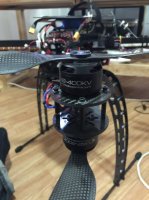 IMG_0072.JPG53.5 KB · Views: 781
IMG_0072.JPG53.5 KB · Views: 781 -
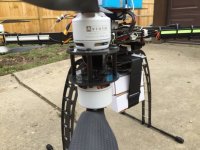 IMG_0096.JPG99.6 KB · Views: 751
IMG_0096.JPG99.6 KB · Views: 751 -
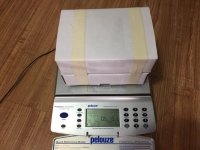 IMG_0070.JPG85.4 KB · Views: 718
IMG_0070.JPG85.4 KB · Views: 718 -
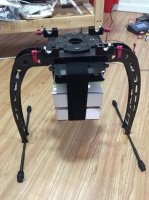 IMG_0073.JPG65 KB · Views: 743
IMG_0073.JPG65 KB · Views: 743 -
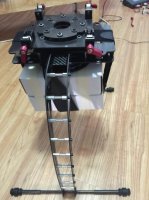 IMG_0074.JPG59.1 KB · Views: 708
IMG_0074.JPG59.1 KB · Views: 708 -
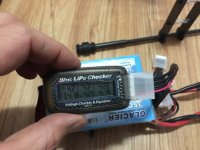 IMG_0076.JPG72.5 KB · Views: 762
IMG_0076.JPG72.5 KB · Views: 762 -
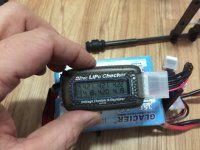 IMG_0077.JPG73.2 KB · Views: 719
IMG_0077.JPG73.2 KB · Views: 719 -
 U42 TIME.jpg79.7 KB · Views: 963
U42 TIME.jpg79.7 KB · Views: 963 -
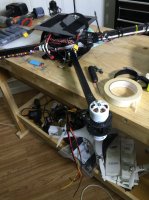 IMG_0084.JPG68.7 KB · Views: 741
IMG_0084.JPG68.7 KB · Views: 741 -
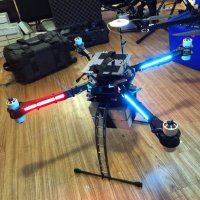 IMG_0091.JPG98.4 KB · Views: 989
IMG_0091.JPG98.4 KB · Views: 989 -
 AV TIME.jpg88.5 KB · Views: 980
AV TIME.jpg88.5 KB · Views: 980 -
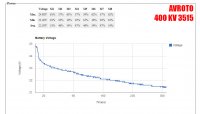 AV power.jpg123.7 KB · Views: 957
AV power.jpg123.7 KB · Views: 957 -
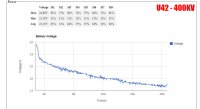 U42 power.jpg122.8 KB · Views: 987
U42 power.jpg122.8 KB · Views: 987 -
 AV output.jpg149.5 KB · Views: 987
AV output.jpg149.5 KB · Views: 987 -
 U42 OUTPUT.jpg167.2 KB · Views: 971
U42 OUTPUT.jpg167.2 KB · Views: 971 -
 AV vibration.jpg158.3 KB · Views: 996
AV vibration.jpg158.3 KB · Views: 996 -
 U42 VIBRATION.jpg153.2 KB · Views: 988
U42 VIBRATION.jpg153.2 KB · Views: 988 -
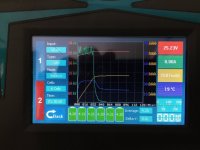 Boot charge 1.JPG80.9 KB · Views: 525
Boot charge 1.JPG80.9 KB · Views: 525 -
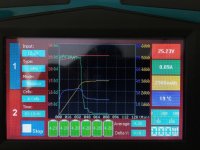 Boot charge 2.JPG99.3 KB · Views: 529
Boot charge 2.JPG99.3 KB · Views: 529 -
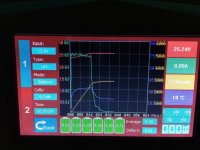 Avroto charge 1.JPG97.8 KB · Views: 675
Avroto charge 1.JPG97.8 KB · Views: 675 -
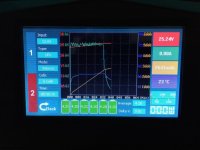 Avroto Charge 2.JPG77.8 KB · Views: 683
Avroto Charge 2.JPG77.8 KB · Views: 683 -
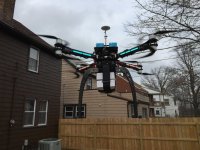 IMG_0100.JPG109.7 KB · Views: 531
IMG_0100.JPG109.7 KB · Views: 531 -
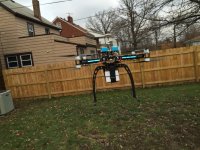 IMG_0105.JPG143.2 KB · Views: 526
IMG_0105.JPG143.2 KB · Views: 526
